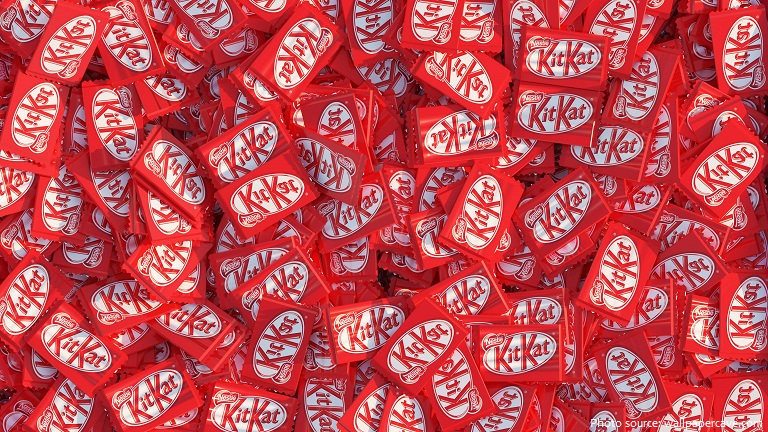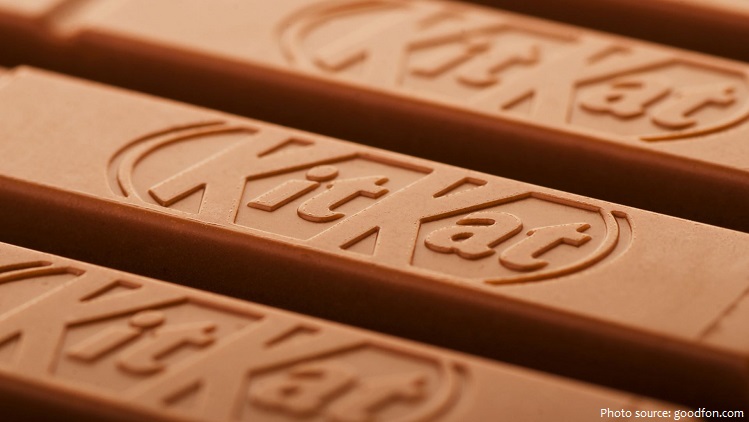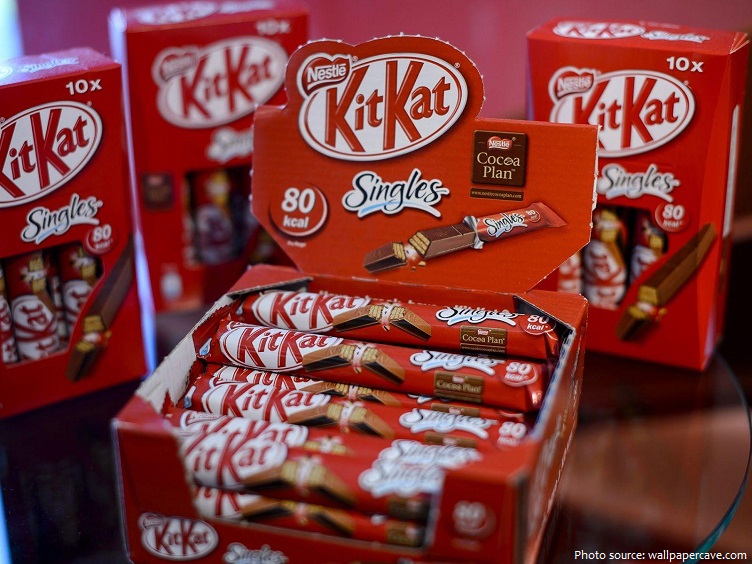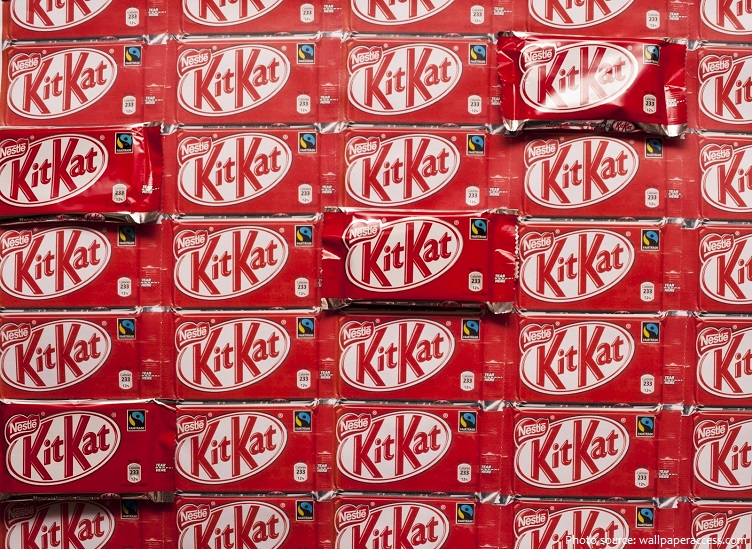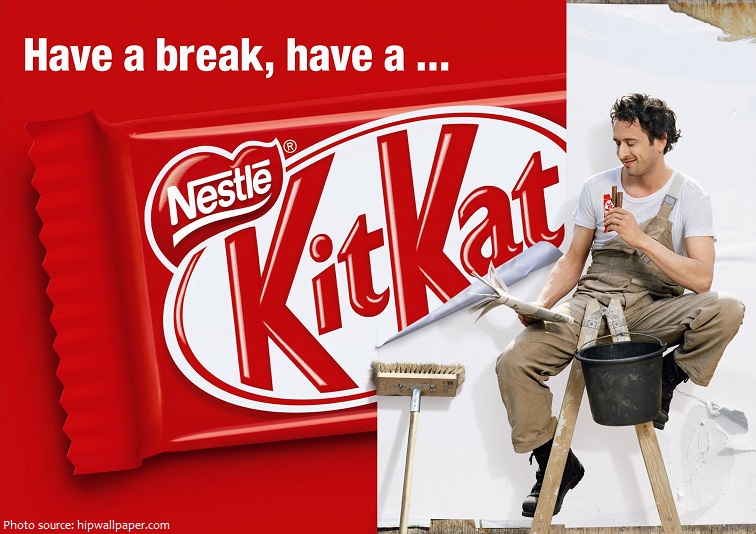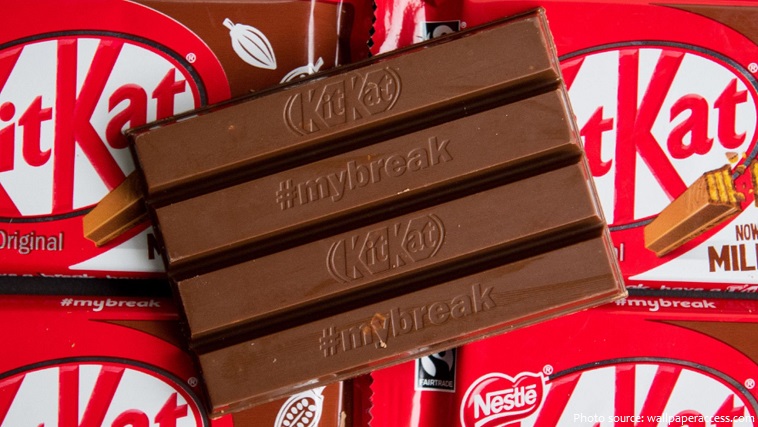Kit Kat is is a chocolate bar made from wafers and chocolate.
It is made up of three layers of wafers. The wafers are covered with a layer of chocolate inside and out. Each whole piece is considered a “finger.” Each package of Kit Kats usually has either one, two, or four fingers connected together.
There are many different flavours of Kit Kat, including milk, white, and dark chocolate.
Use of the name Kit Kat or Kit Cat for a type of food goes back to the 18th century, when mutton pies known as a Kit Kat were served at meetings of the political Kit-Cat Club in London owned by pastry chef Christopher Catling.
The origins of what is now known as the Kit Kat brand go back to 1911, when Rowntree’s, a confectionery company based in York, trademarked the terms Kit Cat and Kit Kat.
The names were not used immediately and Kit Kat first appeared in the 1920s, when Rowntree’s launched a brand of boxed chocolates entitled Kit Cat.
The original four-finger version of the bar was developed after a worker at Rowntree’s York factory put a suggestion in the recommendation box for ‘a chocolate bar that a man could take to work in his pack up’.
It was launched in September 1935 in the UK as Rowntree’s Chocolate Crisp, and the later two-finger version was launched in 1936.
When first introduced in the United Kingdom in 1935, the original Rowntree’s Chocolate Crisp bar had a red wrapper.
Rowntree’s Chocolate Crisp was renamed Kit Kat Chocolate Crisp in 1937 and the logo was added in the same year.
The colour scheme and first flavour variation to the brand came in 1942, owing to World War II, when food shortages prompted an alteration in the recipe. The flavour of Kit Kat was changed to dark chocolate – the packaging abandoned its Chocolate Crisp title, and was coloured blue.
After the war the name became Kit Kat, with the original milk chocolate recipe and red packaging.
Following its success in the United Kingdom, in the 1940s Kit Kat was exported to Canada, South Africa, Ireland, Australia, and New Zealand.
In 1958, Donald Gilles, the executive at JWT Orland, created the iconic advertising line “Have a Break, Have a Kit Kat”.
The Hershey Company has a licence to produce Kit Kat bars in the United States which dates from 1970, when Hershey executed a licensing agreement with Rowntree which allowed Hershey to retain the Kit Kat licence so long as Hershey was not sold.
In June 1988, Swiss company Nestlé acquired Kit Kat through the purchase of Rowntree’s, giving Nestlé global control over the brand, except in the US.
Many varieties of Kit Kat have existed, either permanently or as limited editions, such as those sold to commemorate festivals such as Valentine’s Day.
In Japan, Nestlé has introduced over 300 different flavours since 2000, including ginger ale, soy sauce, baked potato, butter, creme brulee, green tea, sake, and banana.
Nestle Australia in 2018 released the world’s most expensive Kit Kat, a limited edition 24 karat gold-covered bar to celebrate the Chinese New Year! Only 88 bars containing Phoenix Oolong tea leaves from the Guangdong Province of China paired with lychee and fragrant rose petals will be made. The bars are topped off with whole rose buds and rose jelly. The most expensive Kit Kat cost $88 dollars.
Kit Kat in Japanese sounds like “kitto katsu” (きっと勝つ) which means, “You will surely win.” Because of that Kit Kats are mailed as a good luck charm for students ahead of university exams.
Rowntree confectionery company that developed Kit Kat also developed Aero, Fruit Pastilles, Smarties and the Rolo.
In September 2013, it was announced that version 4.4 of Google’s Android mobile operating system would be named “KitKat”. Google licensed the name from Nestlé, with no money changing hands.
